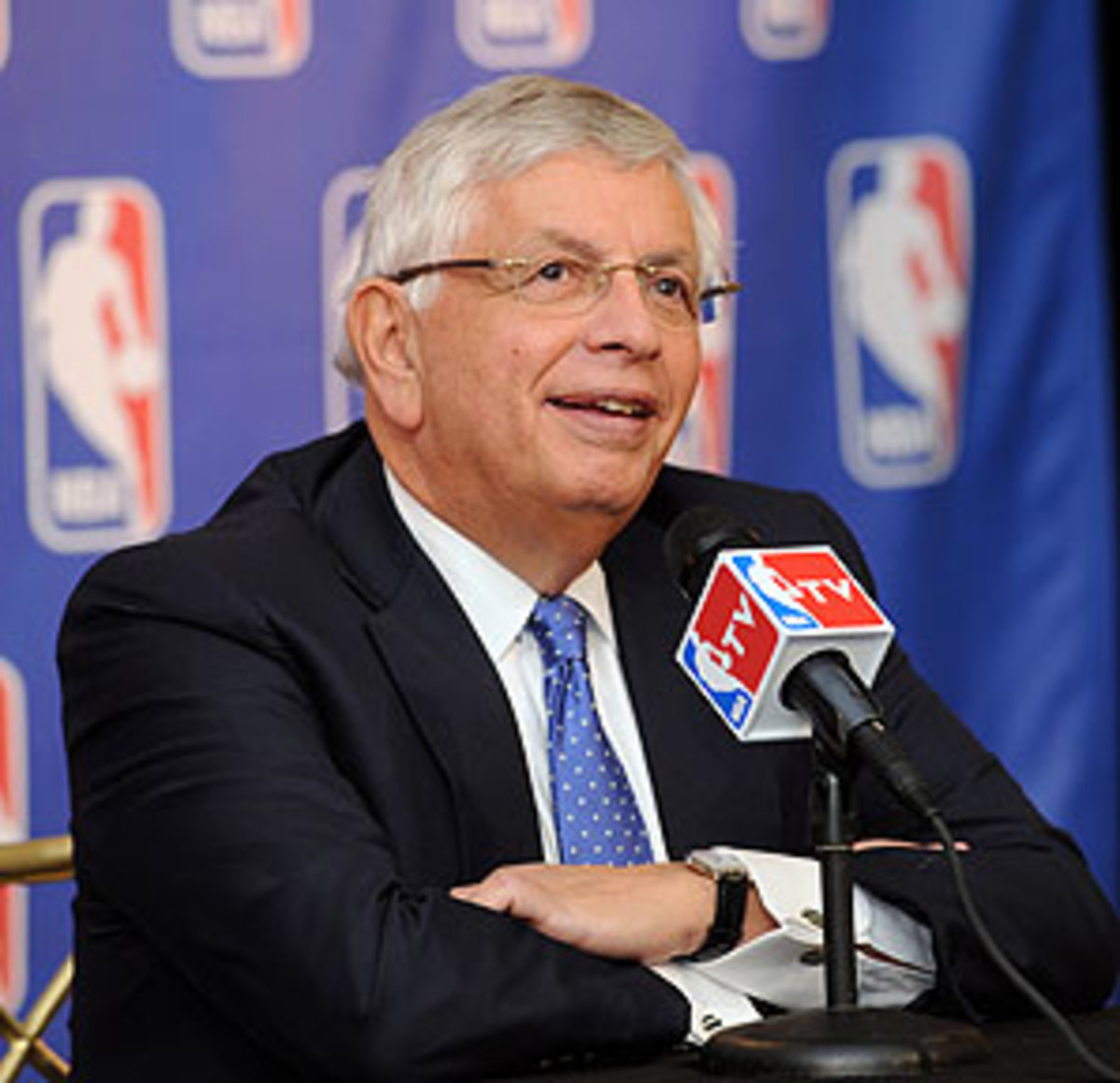NBA expresses bleak outlook as labor uncertainty starts taking toll
It took 10 minutes, six questions and a run through a surprisingly large contingent of Sacramento media for NBA commissioner David Stern and deputy commissioner Adam Silver to address the league's ongoing labor situation on Friday.
And when they did, it wasn't pretty.
First, the positives. During what Stern categorized as an exhaustive two days of meetings with the league's Board of Governors, the owners agreed to submit a new proposal to the union. It wasn't made clear what changes would be in that proposal, but considering the league has not offered anything different from its initial proposal in January 2010, something new represents progress.
The rest, however, was all too familiar.
Addressing reporters at the St. Regis hotel in New York, Stern continued to hammer home the point that the NBA is bleeding cash. He revealed that after losing $370 million in 2008-2009 and $340 million in '09-10, the league was projected to lose $300 million this season, a number Stern said could increase if a lockout is implemented on July 1. Because the NBA's fiscal calendar ends on Sept. 30, losses incurred during the first few months of a lockout would be tacked on.
"The labor uncertainty is beginning to have an impact on our business," Silver said. "We are in discussions with sponsors and other partners about relationships for next year and we can't assure them that we are going to have games. They, as you might imagine, [have begun] to pull back some of their spending on the NBA."
It gets worse: According to Forbes, 12 NBA teams had operating losses during the '08-09 season. In '09-10, according to the publication, that number jumped to 17. On Friday, Silver said that an eye-popping 22 -- yes, 22 -- teams would lose money this season.
"We need a new system," Silver said. "The current system is broken and is unsustainable."
Ironically, the bleak picture painted by Stern and Silver came on the same day the league touted its enormous success. Hours before they took the stage, a news release was sent out promoting the fact that network broadcasts were enjoying their most watched season ever, with TNT (42 percent), ABC (38 percent) and ESPN (28 percent) seeing significant jumps in viewership. Attendance is at 90 percent capacity for the seventh consecutive season, with average attendance up by 1 percent from last season. Merchandise sales are up 20 percent globally while sales on nbastore.com are up 60 percent.
That positive news, however, has done little to sway the owners off the belief that changes -- big changes -- need to be made in the system, particularly when it comes to the 57 percent of the Basketball Related Income that goes to the players. A source briefed on the meetings this week told SI.com that owners are "more resolved than ever" to implement a system that makes the league profitable "not just next year, but 10 or 15 years from now, too."
"Business has improved," Silver said. ["It's] nothing to be proud of but we have reduced losses. But as we have said in the past, we don't believe within this current system we have the ability to move dramatically much more because the cost of generating those additional revenues is so great that if we continue to pay 57 percent off the top to the Players Association, it would require such an enormous additional amount of revenue to reduce losses beyond where we are. We are only going to make very small incremental changes under a 57 percent gross system."
Yes, the dates have changed but the message remains the same. And unless the league makes significant concessions in its next proposal -- which multiple league sources call "highly unlikely" -- the NBA will continue on its path toward a work stoppage. Owners and the union will continue to talk (Stern indicated meetings will be set up for varying times during the playoffs), but there remains plenty of skepticism that a deal will get done.
"Traditionally we don't want to negotiate, obviously, through [the media] to the union," Silver said. "But there are other ways to reach the same goal and that is a system in which all 30 teams can compete, and, if they are well managed, to make a profit."






